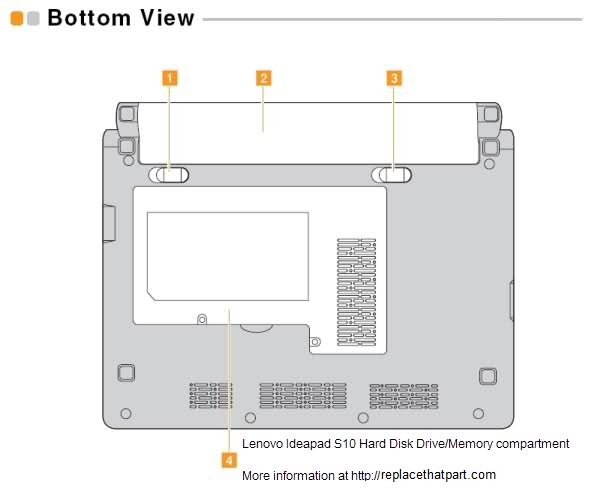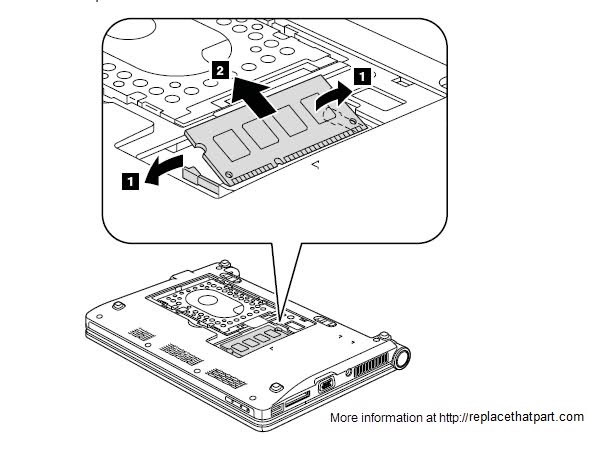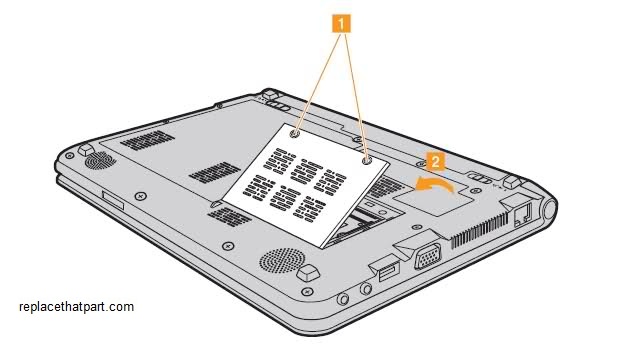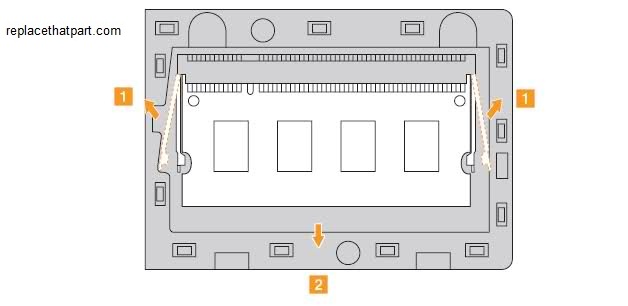A computer memory upgrade is often the best value for increasing overall computer performance. Do you want some more power out of your MSI Wind U123 Netbook? Replace that 1GB memory module with a 2GB SODIMM. The MSI Wind U123 has no memory bay door, however it’s quite easy to replace the original SODIMM. It will speed up opening new applications, running multiple applications at once, and switching between software applications (multi-tasking). Here’s a complete guide on how to upgrade your MSI Wind U123s memory.
First, you have to select the right memory replacement. A 200-pin 1GB DDR2 533 MHz SODIMM is already installed in a slot. The user can upgrade the memory by replacing the 1GB module with a 2GB PC4200 533MHz module. A PC2-5300 667MHz is the most popular netbook memory upgrade at the moment and a faster module is backwards compatible, so a 667MHz SODIM will work too.
(#ad or paid links)
- Crucial 2GB Single DDR2 667MHz (PC2-5300) CL5 SODIMM 200-Pin Notebook Memory Module CT25664AC667
This is by far the most popular Netbook memory replacement at the moment. - Corsair VS2GSDS667D2 2GB (1x2GB) DDR2 667 MHz (PC2 5300) Laptop Memory
Now follow the general steps below and the steps explained in the detailed instructional video below:
1. Shut down the computer completely.
2. Power off your MSI Wind U123 if it’s on. Also, unplug the AC power adapter.
3. Prepare your MSI Wind U123 by placing it upside-down on a flat surface with some form of soft padding. Static electricity can damage your module and other computer parts. Make sure that you are working in a static-safe environment. Remove any plastic bags or papers from your work space.
4. Remove the battery. This will prevent you from accidentally shorting anything on the system board during this process.
5. Discharge residual power by pressing the power button.
6. Be sure to ground yourself. Touch something metal (like a tap), for a couple of seconds and you should be fine.
7. Remove the bottom half of the chassis. The bottom half is quite easily removable after unscrewing 10 or so screws. There’s a “void if tampered with” warranty sticker on top of one screw. You can remove that sticker; MSI Tech support has confirmed that the warranty will not be voided if the memory is upgraded.
8. You can find the original SODIMM at the front/right side of the computer (see video). Press outwards on the latches on both edges of the socket at the same time, remove the SODIMM. Be sure to save the old SODIMM for future use.
9. Most memory will be sold in a piece of hard, clear plastic. Gently remove the new module from the packaging by pressing on it from the plastic side. Avoid bending the module or applying too much force to the packaging. When you remove the SODIMM memory module from its packaging hold it by the edges, try not to touch the gold colored contacts as this can damage the memory.
10. Turn the module so the teeth are facing the SODIMM slot and the sticker is face down. It’s impossible to put the memory module in backwards thanks to the notches which “key” it with the slot. Insert the notched end of the SODIMM into the socket. This is important; you want to stick in the new memory module at a 45 degree angle. Press the SODIMM firmly, and pivot it until it snaps into place and the metal retaining clips clasp into the grooves on either side of the module.
11. Make sure that it is firmly fixed in the slot and does not move easily. If the memory does not fit easily, take it out and try again.
12. Put everything back together. Snap the bottom of the chassis back into place. Getting the bottom back on might be more difficult than taking it off. Take your time, don’t force anything
13. Test it. Turn your computer back on. The BIOS automatically detects the amount of memory in the system and configures CMOS accordingly during the Power-On Self-Test (POST) process. There is no hardware or software (including BIOS) setup required after the memory is installed. You should see the new amount of memory displayed on your start-up screens or in the properties for “My Computer”.
14. Troubleshooting. If you have trouble with your new RAM, check these things first. Check the power cords. Is everything plugged in properly? Check the module. Try removing the module and replacing it to make sure it is seated properly in the slot. If you’re still having difficulties with your RAM, check the Crucial FAQ section. You may find an easy solution for your problem.
MSI Wind U123 Memory (RAM) Upgrade Instructional Video
Enjoy!




